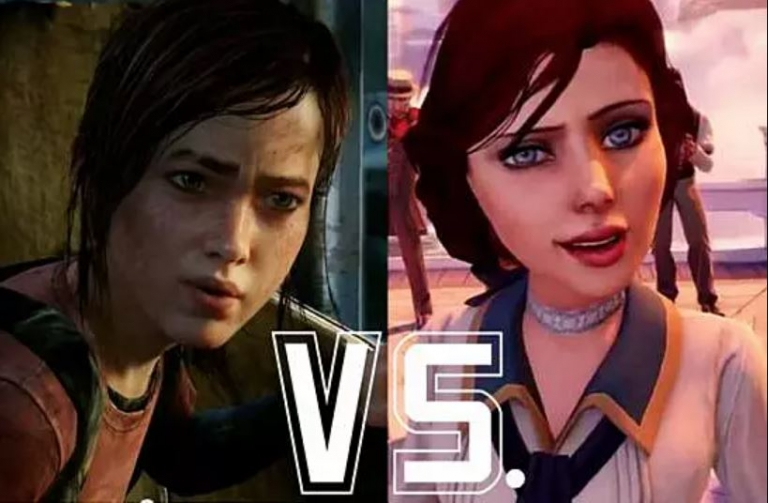Character design is a crucial aspect of creating any video game. A good character design can grab the player’s attention, create emotional connections and strengthen the overall gaming experience. There are three popular types of character designs: realistic designs, cartoon designs, and abstract designs. A well-designed character can create an emotional connection with the player, making them invested in the game world and characters. The visual appeal of the characters plays a role in building a player’s emotional investment in the game, and characters with distinctive designs can help to differentiate themselves from other games, creating an identity for the game that can be easily recognized and remembered.
How Character Design Shapes the Gaming Experience
Introduction
Character design is a crucial aspect of creating any video game. A good character design can grab the player’s attention, create emotional connections and strengthen the overall gaming experience.
The Importance of Character Design
The character design is the look and feel of the protagonist, antagonist or sidekick in a video game. It is an art that combines many elements to create a unique and memorable character. The importance of character design lies in its ability to create an emotional connection with the player. When done right, a character can become iconic, memorable and lovable.
Good character design can also help players to immerse themselves in the game world, understanding more about the game’s story and enhancing the gameplay by adding a sense of identity and personality to the characters. A lack of character design, on the other hand, can lead to a bland and generic game that fails to excite players’ interests.
Types of Character Designs
There are many ways to approach character design, and every game developer has their own unique style. However, some popular character designs are as follow:
- Realistic Designs: These designs aim to create characters that look as realistic as possible, with attention paid to facial features, hair, clothing and body proportions. They are often used in games that focus on realism and serious storytelling (e.g. The Last of Us).
- Cartoon Designs: These designs make characters look more cartoonish, with exaggerated features and bright, vivid colours. They are commonly used in family-friendly and casual games (e.g. Super Mario Bros).
- Abstract Designs: These designs are more stylized and focus less on realism. They are used to convey a sense of creativity and uniqueness, often in indie or experimental games (e.g. Journey).
Impact of Character Design on Gaming Experience
Character design plays a significant role in shaping the overall gaming experience. A well-designed character can create an emotional connection with the player, making them invested in the game world and characters. This emotional connection often translates into a definitive impact on the game’s success or failure.
The visual appeal of the characters plays into building a player’s emotional investment in the game. Players will flock to heroic, relatable, or simply visually appealing characters, with the intention of immersing themselves in their character’s perspective. This helps to keep players engaged and committed to the game, driving replayability and long-term success.
Characters with distinctive designs also help to differentiate themselves from other games, creating an identity for the game that can be easily marketed, recognised and remembered. Think of iconic character costumes: Super Mario’s red hat and blue jumpsuit, Sonic The Hedgehog’s blue shoes, Pikachu’s red cheeks, and yellow fur. These are all famous character designs and are easily identifiable, which helps to promote the game and attract players to engage in further gameplay.
Examples of Successful Character Design
There are many games with characters whose designs have become iconic and memorable:
Mario Series
The titular hero, Mario, boasts a broad, rotund gait, a bushy handlebar mustache, and bright red colours. His outfit consists of a red cap with the letter ‘M,’ a blue jumpsuit adorned with two golden buttons, and white gloves. The design is simple, which makes it easily recognisable and can be put on various merchandise like plush toys, iPhone cases and clothing lines.
Legend of Zelda Series
Link, the hero of the Legend of Zelda series, has become a beloved video game character thanks to his iconic design. With his green tunic, elf-like pointed ears, and blonde hair, he has come to be the “epitome of fantasy game character design. Link’s timeless and distinctive design emphasizes his role as a hero and makes him recognizable to players across generations.
Final Fantasy VII
Final Fantasy VII’s Cloud is one of the most recognizable Final Fantasy protagonists. His spiky hair, oversized Buster Sword, and trademark SOLDIER uniform make him stand out from other final fantasy characters. Also, his multiple thrilling outfits such as Advent Children, Kingdom Hearts offer a sense of variety to his design, which is essential for this game as his character battles through many different scenarios throughout the game.
Conclusion
The success of a game hinges on a combination of factors, and character design is one of the most critical components of them all. By creating engaging and likeable characters, developers can draw players into their game world, creating an emotional connection that enhances the overall gaming experience. Whether it’s a simple outfit or a complicated backstory, the attention paid to a character design can make or break a game, and the unique qualities that such attributes possess can often cement a game’s legacy. So, the next time you play a video game, consider the design of the characters and imagine what the gameplay experience would have been like if they did not have a charismatic design.
